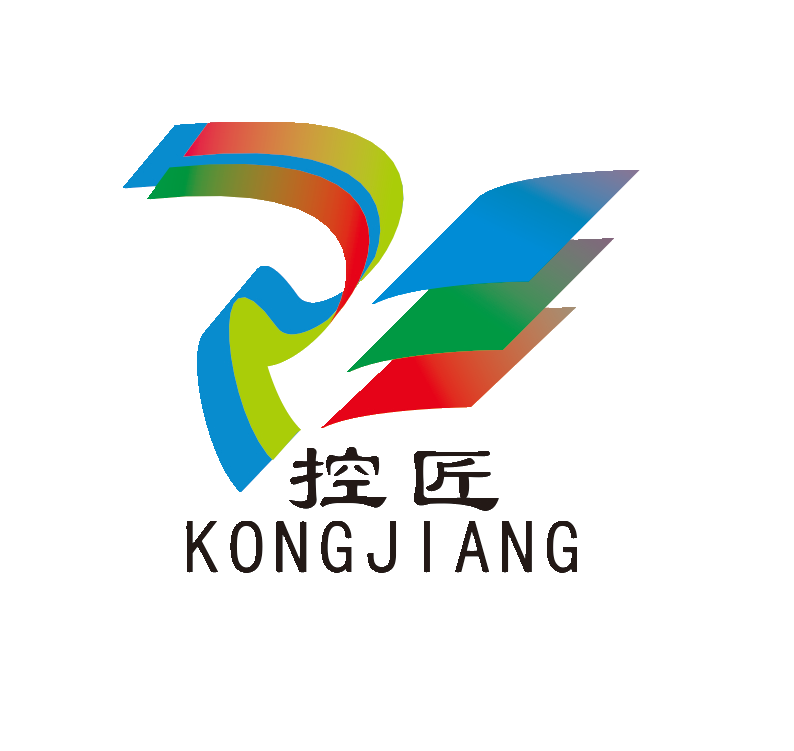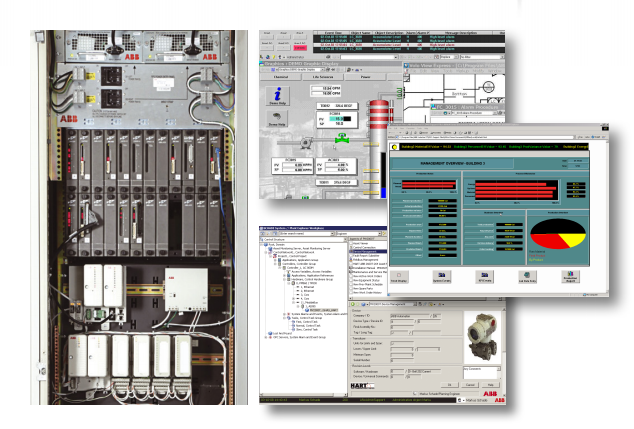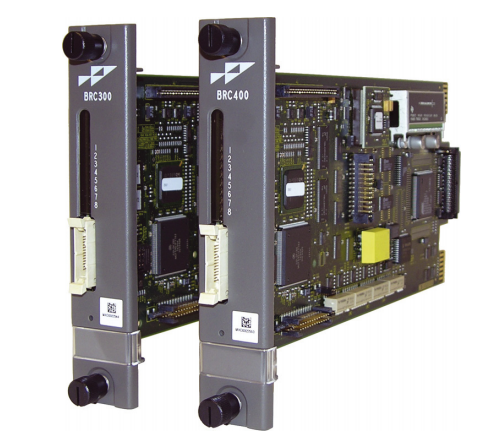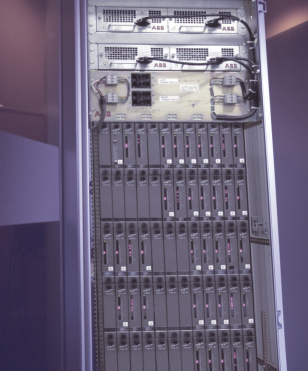

+086-15305925923
K-WANG
Service expert in industrial control field!
Product
Article
NameDescriptionContent
Adequate Inventory, Timely Service
pursuit of excellence


Ship control system
Equipment control system
Power monitoring system
Current position:
新闻动态
newS
Brand
ABB Industrial'T System 800xA Harmony/INFI90 System
ABB Industrial'T System 800xA Harmony/INFI90 System
ABB Industrial'T System 800xA Harmony/INFI90 System
Features and Benefits
Extending the Return-on-lnvestment
of Harmony Systems: New system
hardware and software releases increase
operating efficiency and extend the life of
installed systems. New products and pro-
grams make the decision to evolve existing
systems straightforward and easy.
Achieving an Extended Automation
scope with System 800xA:
- Personalized User Workplaces:
Reduced time to decision and action
is achieved with 800xA Process Portal
personalized workplaces.Information
and workplace layouts are optimized to
maintenance, engineering, management,
and operating personnel preferences and
needs.
- Wide-ranging control functionality:
Applicable for control and safety
applications, AC 800MControl and
I/O meet all plant automation needs.
AC 800M integration with Harony
systems is made easy through the INF190
Function Code (FC) Library and peer-
to-peer comm unications with Harmony
controllers.
- Device Management: Device Manage-
ment features lower lifecycle costs through
significant savings in the design, implemen-
tation, and operation of field equipment.
- Asset Optimization:Significantly
increase process uptime and reduce
maintenance costs through optimized
remediation work processes and early de.
tection of asset performance problems.
-Information Management: Improve vis-
ibility of integrated information results in
effective decision-making.
Lowering System Lifecycle Costs
and Risk through System Evolution:
Evolution programs ensure that automa-
tion systems are continually optimized to
support customer business goals.

To be successful in today's highly competitive business markets,
companies drive their production facilities toward Operational
Excellence (OpX) with defined goals of maximizing Return on Net
Assets (RONA), lowering Total Cost of Ownership (TCO), sharing
best practices throughout the enterprise, and driving profitable,
sustainable growth. Achieving these goals require more than what a
traditional Distributed Control System(DCS) can offer. It requires a
plant automation system that can improve:
Plant effectiveness - the ability to combine the right decisions
with optimized work processes
Plant agility - the ability to make 'on-the-fly’ adjustments as busi-
ness opportunities present themselves with the same
proficiency as when performing the routine
Performance visualization- the ability to provide users with real-
time performance and feedback
In general, OpX can only be achieved by extending the reach of
plant automation systems to synchronize all process operations
within one common environment for operations, engineering, and
information.
ABB delivers this extended automation scope by combining the
SYMPHONY Harmony system with Industrial IT Extended
Automation™ System 800xA's best-in-class productivity enhancement
software. System 800xA Asset Optimization,Information
Management, and Process Portal personalized workplaces optimize
productivity at substantial cost savings. Where others promote
“rip-and-replace" migration strategies, ABB delivers true system
evolution allowing Harmony owners to build on their strong DCS
foundation by providing the flexibility to implement these functions
in an incremental stepwise fashion.
SYMPHONY Harmony is a proven process control system used for demanding
applications in various industries. The wide range of Harmony references includes the
power generation, chemical, pharmaceutical, pulp and paper, water and wastewater,
petrochemical, metals and mining, food and beverage, cement, and sugar industries.
These system owners first acquired their ABB distributed control system because
it offered the best set of solutions that helped them be successful and competitive.
Whether it was ease of engineering, system scalability, powerful control applications
or ergonomically designed user interfaces, the system met the company's needs in an
effective and efficient manner.
But markets and business conditions are constantly changing,requiring faster
turnarounds, greater customization, smaller lot sizes, and lower overall costs. In
today's faced paced economy, companies are under more pressure than ever to run
their operation profitably - to achieve greater results with fewer resources.
With reduced capital spending, ABBsystem owners need to perform smarter and
better at substantial cost savings. The business challenge they face is to squeeze the
most productivity from the installed system by adding new functions and features,
extending its useful life and the applications within it, and by reducing maintenance
costs while improving overall reliability.
ABB addresses these challenges by providing new capabilities that enable Symphony
Harmony system owners to achieve Operational Excellence. Symphony Harmony
system products are enhanced to improve their cost/performance curves and make
them more reliable while incorporating proven, new technology to enable step change
benefits.
While a greenfield automation system installation can readily take advantage of the
latest capabilities, an existing system installation faces many modernization challenges.
These include:
24/7 production, short or non-existent downtime
Upgrades must be performed without jeopardizing operation of plant or mill
Maintenance budgets rather than large capital project funding
Site has made significant investments in:
.Control applications
.User interfaces
·Training of plant personnel
.Standard Operating Procedures (SOP) based on the automation system
.Validation (for the regulated industries)
.Hardware
.Software
.Other intellectual property
Therefore, changes to an existing system must be limited to the specific area of
interest, be risk averse, and protect the owner's investments in hardware, software,
and intellectual property: In short, there must be a solid, measurable Return-on-
Investment (ROI).

ABB's answer to these issues is founded in its evolution strategy. Evolution is ABB's
way to deliver continuous improvement to its installed systems; allowing system
owners to meet automation system business objectives in an incremental way affording
the lowest risk and best ROI. It is not migration, it is not “rip-and-replace"; it is a well
thought out plan, allowing system owners to adapt new capabilities at their pace,
according to their need.
From a product point of view, this strategy is business as usual at ABB. Its pledge
of Evolution tbrougb Enbancement (Figure 1) has extended the life and the
Return-on-Investment of installed Harmony systems. Other vendors may talk about
investment protection, but ABB's proven programs are truly unique in the industry. All
told, from the introduction of Network 90® in 1980, through each of the evolutionary
steps of INFI 90*, INFI 90 OPEN, and SYMPHONY"Harmony, this family of systems
represents the largest contiguous installed base of any process automation system
in the world. System 800xA represents the most recent step in the on-going system
evolution process.
The purpose of this document is to summarize the many opportunities available
to the Harmony system owner for enhancing the value of and extending the useful
functionality of their system. On the following pages are details of the enhancements
available to the Harmony DCS foundation (see section“Extending the Return-on-
Investment of Harmony Systems"); as well as the opportunities available to build to an
extended automation scope from a Harmony DCS foundation (see section“Achieving
an Extended Automation Scope with System800xA").
ABB continues to add traditional DCS functionality for the Harmony system. This has
resulted in a variety of new functions and technology updates for Harmony products
including Rack I/O modules, Bridge Controllers, communication modules, Composer
system configuration tools, and operator consoles. The following sections summarize
the most recent enhancements to the Harmony system.

Harmony Control,
The Harmony Rack modules (Figure 2) redesigned with modern board components
I/O, and
and surface mount technology, are form, fit, and functional equivalents to the
Communications
Network 90, INFI 90, and INFI 90 OPEN modules. This provides backward
compatibility to ensure a long lifecycle for Harmony systems.
Figure 2.Harmony Rack Modules
Harmony Rack Controllers. Harmony Rack controllers have remained state-of-the.
art through annual software and hardware enhancement releases. Following ABB's
commitment to Evolution tbrougb Enbancement, the system's flagship controllers,
the Harmony Bridge Controller (BRC) family, preserve existing system control logic
configuration including support for all existing function code executions,custom
user programs, and foreign device interfaces. This provides a predictable and risk-free
evolution for the system's control execution environment.
The BRC300and the BRC400 (Figure 3) represent the latest additions to the
BRC family.
Harmony BRC Controller Features
Form, fit & functional equivalent for Harmony rack controllers
Deploys advanced Reduced Instruction Set Computer (RISC) microprocessor
technology - Motorola32-bit Coldfire
Retains Harmony controller (BRC, MFP,etc.) hardware and software architecture
Enhanced controller reliability
Provides approximately (2x) function code execution rate vs.BRC100,(4x) vs.MFPxx,
and (8x) vs.MFCxx
Extended user configuration memory;30,000 function blocks(BRC400 version)
Preserves existing control logic configurations, providing predictable and risk-free evolution:
Function code execution
Custom user programs
Foreign device interfaces
■Fast fail-over redundancy
High availability and fault tolerance in a redundant pair configuration
Controller configuration supported by the Composer engineering tool
Supports all Harmony l/O systems, simultaneously providing support for installed I/O systems
and expansions:
Rack I/O
Block I/O
S800 I/O(System 800xA)
Support for Module Bus and Controlway communications
Figure 3.Bridge Controller Family(BRC300,BRC400)
Harmony Rack I/O. The Harmony Rack I/O family includes a wide variety of input,
output, and signal conditioning modules. Module types, ranging from standard analog
and digital I/O to specialty I/O such as turbine control, and Sequence of Events(SOE),
can be combined to provide a comprehensive set of functionality to meet all market and
industrial requirements. Additionally, the Harmony remote I/O capabilities have been
enhanced with the addition of S800 I/O (see section“S800 I/O for Harmony" for details).

- YOKOGAWA
- Energy Access
- Renewable Integration
- Energy Subsidies
- Energy and Water
- Net zero emission
- Energy Security
- Critical Minerals
- A-B
- petroleum
- Mine scale
- Energy and Gender
- Covid-19
- man-machine
- Reliance
- ADVANCED
- SEW
- ProSoft
- WATLOW
- Kongsberg
- FANUC
- VSD
- DCS
- PLC
- Sewage treatment
- cement
- Yaskawa
- Woodward
- BOSCH Rexroth
- MOOG
- General Electric
- American NI
- Rolls-Royce
- CTI
- Honeywell
- EMERSON
- Automobile market
- xYCOM
- Motorola
- architecture
- Industrial information
- New energy
- electricity
- Construction site
- HIMA
- ABB
- Rockwell
- Schneider Modicon
- Siemens
- MAN
- GE
- TRICONEX
- Control Wave
- ALSTOM
- AMAT
- STUDER
- KONGSBERG
- MOTOROLA
- DANAHER MOTION
- Bentley
- Galil
- EATON
- MOLEX
- Triconex
- DEIF
- B&W
- ZYGO
- Aerotech
- DANFOSS
- KOLLMORGEN
- Beijer
- Endress+Hauser
- schneider
- Foxboro
- KB
- REXROTH
- YAMAHA
- Johnson
- Westinghouse
- WAGO
- TOSHIBA
- TEKTRONIX
51
-
Kollmorgen S33GNNA-RNNM-00 - Brushless Servo Motor
-
Kollmorgen 6sm56-s3000-g-s3-1325 - Servo Motor
-
Kollmorgen AKM52K-CCCN2-00 - Servo Motor
-
Kollmorgen PSR3-230/75-21-202 - Power Supply
-
Kollmorgen akm24d-anc2r-00 - Servo Motor
-
Kollmorgen AKM22E-ANCNR-00 - Servo Motor
-
Kollmorgen S60300-550 - Servo Drive
-
Kollmorgen B-204-B-21 - Servomotor
-
Kollmorgen AKM21E-BNBN1-00 - Servo Motor
-
Kollmorgen TT2953-1010-B - DC Servo Motor
-
Kollmorgen pa8500 - Servo Power Supply
-
Kollmorgen BDS4A-210J-0001-207C2 - Servo Drive
-
Kollmorgen TTRB1-4234-3064-AA - DC Servo Motor
-
Kollmorgen MH-827-A-43 - Servo Motor
-
Kollmorgen AKM24D-ACBNR-OO - Servo Motor
-
Kollmorgen 00-01207-002 - Servo Disk DC Motor
-
Kollmorgen AKM21C-ANBNAB-00 - Servo Motor
-
Kollmorgen PSR3-208/50-01-003 - Power Supply
-
Kollmorgen 6SM56-S3000 - Servo Motor
-
Kollmorgen DBL3H00130-B3M-000-S40 - Servo Motor
-
Kollmorgen 6SN37L-4000 - Servo Motor
-
Kollmorgen AKM65K-ACCNR-00 - Servo motor
-
Kollmorgen 6SM56-L3000-G - Servo Motor
-
Kollmorgen AKMH43H-CCCNRE5K - Servo Motor
-
Kollmorgen PSR4/52858300 - Power Supply
-
Kollmorgen KBM-79H03-E03 - Direct Drive Rotary Motor
-
Kollmorgen AKM33E-ANCNDA00 - Servo Motor
-
Kollmorgen U9M4/9FA4T/M23 - ServoDisc DC Motor
-
Kollmorgen AKM13C-ANCNR-00 - Servo Motor
-
Kollmorgen AKM43L-ACD2CA00 - Servo Motor
-
Kollmorgen AKM54K-CCCN2-00 - Servo Motor
-
Kollmorgen M-605-B-B1-B3 - Servo Motor
-
Kollmorgen AKD-P00606-NBAN-0000 - Rotary Drive
-
Kollmorgen 6SM-37M-6.000 - Servo Motor
-
Kollmorgen A.F.031.5 - Sercos Interface Board
-
Kollmorgen 918974 5054 - Servo PWM
-
Kollmorgen U12M4 - ServoDisc DC Motor
-
Kollmorgen AKD-B00606-NBAN-0000 - Servo Drive
-
Kollmorgen MV65WKS-CE310/22PB - Servo Drive
-
Kollmorgen 65WKS-CE310/22PB - Servo Drive
-
Kollmorgen EM10-27 - Module
-
Kollmorgen S64001 - Servo Drive
-
Kollmorgen CR03200-000000 - Servo Drive
-
Kollmorgen 6SM57M-3000+G - Servo Motor
-
Kollmorgen BDS4 - Servo Drive
-
Kollmorgen AKD-P00306-NBEC-000 - Servo Drive
-
Kollmorgen AKD-B01206-NBAN-0000 - Servo Drive
-
Kollmorgen STP-57D301 - Stepper Motor
-
Kollmorgen 6SM37L-4.000 - Servo Motor
-
Kollmorgen 44-10193-001 - Circuit Board
-
Kollmorgen PRDR9SP24SHA-12 - Board
-
Kollmorgen PRD-AMPE25EA-00 - Servo Drive
-
Kollmorgen DBL3N00130-0R2-000-S40 - Servo Motor
-
Kollmorgen S406BA-SE - Servo Drive
-
Kollmorgen AKD-P00607-NBEI-0000 - Servo Drive
-
Kollmorgen AKD-P01207-NBEC-0000 - Servo Drive
-
Kollmorgen CR03550 - Servo Drive
-
Kollmorgen VSA24-0012/1804J-20-042E - Servo Drive
-
Kollmorgen N2-AKM23D-B2C-10L-5B-4-MF1-FT1E-C0 - Actuator
-
Kollmorgen 04S-M60/12-PB - Servo Drive
-
Kollmorgen H33NLHP-LNW-NS50 - Stepper Motor
-
Kollmorgen A-78771 - Interlock Board
-
Kollmorgen AKM43E-SSSSS-06 - Servo Motor
-
Kollmorgen AKD-P00607-NBEC-0000 - Servo Drive
-
Kollmorgen E21NCHT-LNN-NS-00 - Stepper Motor
-
Kollmorgen cr10704 - Servo Drive
-
Kollmorgen d101a-93-1215-001 - Motor
-
Kollmorgen BDS4A-203J-0001-EB202B21P - Servo Drive
-
Kollmorgen MCSS23-6432-002 - Connector
-
Kollmorgen AKD-P01207-NACC-D065 - Servo Drive
-
Kollmorgen CK-S200-IP-AC-TB - I/O Adapter and Connector
-
Kollmorgen CR10260 - Servo Drive
-
Kollmorgen EC3-AKM42G-C2R-70-04A-200-MP2-FC2-C0 - Actuator
-
Kollmorgen BDS5A-206-01010-205B2-030 - Servo Drive
-
Kollmorgen s2350-vts - Servo Drive
-
Kollmorgen AKM24D-ANC2DB-00 - Servo Motor
-
Kollmorgen E31NCHT-LNN-NS-01 - Stepper Motor
-
Kollmorgen PRD-0051AMPF-Y0 - Servo Board
-
Kollmorgen TB03500 - Module
-
Kollmorgen 60WKS-M240/06-PB - Servo Drive
-
Kollmorgen M21NRXC-LNN-NS-00 - Stepper Motor
-
Kollmorgen H-344H-0212 - Servo Motor
-
Kollmorgen MCSS08-3232-001 - Connector
-
Kollmorgen AKM33H-ANCNC-00 - Servo Motor
-
Kollmorgen PA-2800 - Power Supply
-
Kollmorgen MTC308C1-R1C1 - Servo Motor
-
Kollmorgen PRDR0091300Z-00 - Capacitor Board
-
Kollmorgen BDS4A-206J-0024/01502D79 - Servo Drive
-
Kollmorgen S20330-VTS - Servo Drive
-
Kollmorgen S20250-CNS - Servo Drive
-
Kollmorgen SBD2-20-1105-WO - Servo Drive Board
-
Kollmorgen M405-C-A1--E1 - Servo Motor
-
Kollmorgen PRD-PB805EDD-00 - Servo Drive
-
Kollmorgen 6SM57S-3.000-J-09-HA-IN - Servo Motor
-
Kollmorgen AKM33H-ANCNDA-00 - Servo Motor
-
Kollmorgen PCB-00030200-04 - PCB
-
Kollmorgen H22SSLB-LNN-NS-02 - Stepper Motor
-
Kollmorgen BJRL-20012-110001 - Module
-
Kollmorgen BDS4A-206J-0001404A - Servo Drive
-
Kollmorgen H-342-H-0802 - Servo Motor
-
Kollmorgen CR10561 - Servo Drive
-
Kollmorgen BDS5A-206-00010-205B2-030 - Servo Drive
-
Kollmorgen BDS5A-206-00010-207B-2-030 - Servo Drive
-
Kollmorgen mcss08-3224-001 - Connector
-
Kollmorgen M-207-B-23-B3 - Servo Motor
-
Kollmorgen PRD-0041200Z-S0 - Encoder/Resolver Card
-
Kollmorgen MH-225-G-61 - Motor
-
Kollmorgen MT308B1-T1C1 - Servo Motor
-
Kollmorgen BDS4A-240J-0001604C83 - Servo Drive
-
Kollmorgen 6SM57-S-3000 - Servo Motor
-
Kollmorgen N-T31V-15-5B-6-MF3-FT1E-C251 - Actuator
-
Kollmorgen PRD-0051AMPA-X0 - Servo Board
-
Kollmorgen CF-SS-RHGE-09 - Cable
-
Kollmorgen DIGIFAS7204 - Servo Drive
-
Kollmorgen S30101-NA - Servo Drive
-
Kollmorgen DIGIFAS7201 - Servo Drive
-
Kollmorgen PRD-0051AMPA-Y0 - Servo Board
-
Kollmorgen AKM23D-EFCNC-00 - Servo Motor
-
Kollmorgen SE10000 - Servo Drive
-
Kollmorgen PSR4/5A-112-0400 - Power Supply
-
Kollmorgen AKM31H-ANCNC-01 - Servo Motor
-
Kollmorgen M-203-B-93-027 - Servo Motor
-
Kollmorgen CP-SS-G1HE-05 - Connector
-
Kollmorgen AKM42G-ASCNR-02 - Servo Motor
-
Kollmorgen DBL4N00750-B3M-000-S40 - Servo Motor
-
Kollmorgen R3-BK23-152B-12-PL-ASE-BS115 - Actuator
-
Kollmorgen MH-427-B-61 - Motor
-
Kollmorgen cr06902 - Servo Drive




